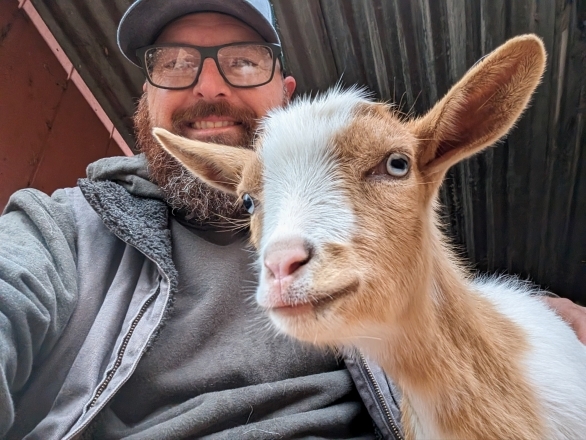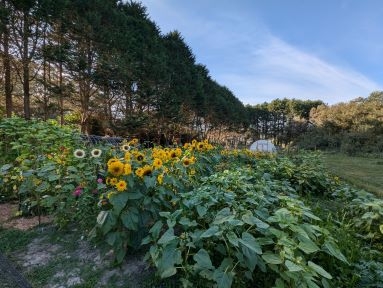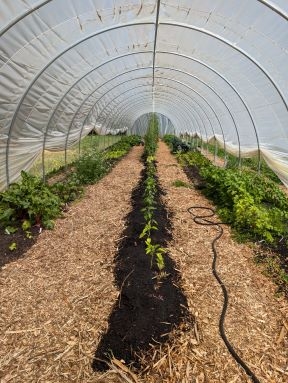- Author: UCCE Master Gardeners of Humboldt and Del Norte Counties
Our next Master Gardener training will take place January–May 2025.
If you like gardening, are interested in science-based horticulture, have a volunteer spirit, and would enjoy sharing your knowledge with the public, then this may be for you! UC Master Gardeners are trained in horticulture and use their training to give talks and classes, answer help desk questions, work in local demonstration gardens, answer questions at events, and so much more.
We welcome applicants from all walks of life with diverse backgrounds and experiences.
Learn about the application process: https://ucanr.edu/sites/hdnmastergardeners/Become_a_Master_Gardener/
Mandatory orientations are happening this month! There are 3 options for attending. Choose the one that works best for you:
- Wednesday, October 16th, 5:30-7 pm - In Person: Eureka, UCCE Humboldt, 5630 S. Broadway, Eureka, CA 95503.
- Wednesday, October 23rd, 5:30-7 pm - In Person: Crescent City, Location TBD.
- Wednesday, October 30th, 5:30-7 pm - Over Zoom. To REGISTER for this orientation click on https://ucanr.zoom.us/meeting/register/tJcude2trjwqE9e93zfJGFxjGCmWEK7-tiny and you will be sent the Zoom link and log in information. link and log in information.
These meetings are intended to familiarize you with the UC Master Gardener program's mission and activities, describe the training process and time commitments, and answer your questions about becoming a UC Master Gardener. 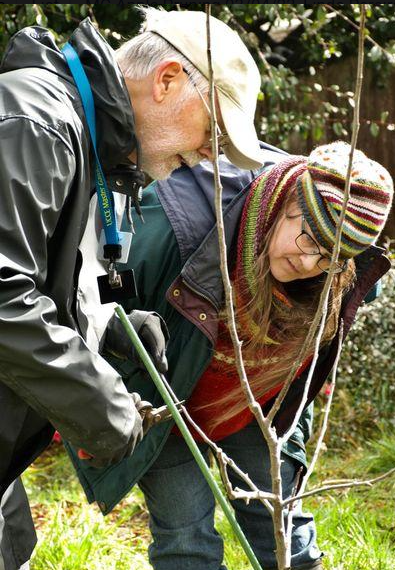
Photo courtesy of L. Pereira, UCCE Master Gardener. Used with Permission.
Is it a rock formation? A person who studies the earth? Something horticultural? What…
If you picked something horticultural, you are correct! Simply put, geophytes are perennial plants with underground storage systems. Geophyte means “earth plant,” and the term was first used over a hundred years ago to describe plant species that produce modified, underground structures to store nutrients and water, and they are specifically adapted to survive periods of harsh environmental conditions. Things like cold, heat, drought, fire, and grazing animals. These underground storage containers are active, and when conditions are right, they grow, bloom, and reproduce.
The term “bulb” is often used to refer to tubers, corms, rhizomes, and true bulbs.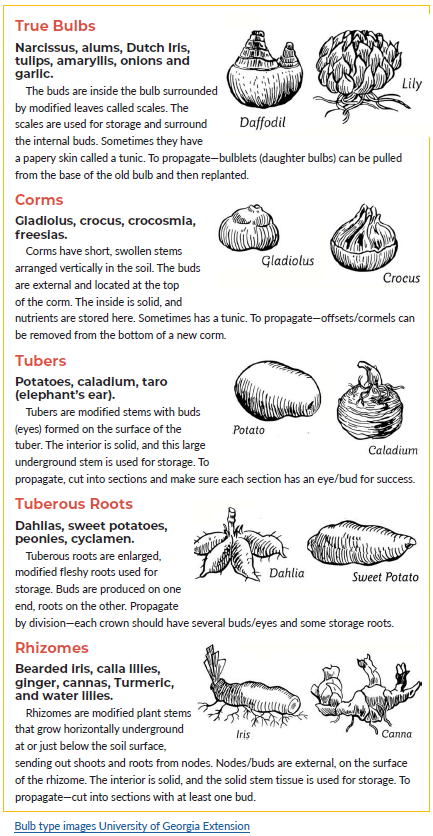
Bulbs are available in a wide variety of sizes, colors and forms.
They provide us with flowers, herbs and vegetables.
They are easy to grow.
Geophytes have a built-in emergency readiness kit in their underground storage system; some are great for eating, while others are attractive in your ornamental garden. Many gardeners use the term “bulb” to describe these wonderful plants that sprout green leaves and colorful blossoms seemingly out of nowhere. Geophytes include bulbs (true bulbs), corms, tubers, tuberous roots, and rhizomes. Each type has its own underground structures, cultivation and propagation needs. Let's look at some of the common types of geophytes found in Humboldt and Del Norte Counties, as well as your local grocery store.
In our area, October, November, and early December are the months to plant Spring flowering bulbs, rhizomes, tuberous roots, and corms. These include daffodils, anemones, hyacinths, bearded irises, tulips, lilies, native Pacific Coast irises, alums, and crocus. Sources for bulbs include local nurseries, seed/bulb catalogs, and fellow gardeners who use this time to divide and propagate their plants.
CULTURAL NEEDS
- SOIL: They need well-drained soil. Drainage is critical to keep them from rotting; consider planting in raised beds on a slope or in containers. They prefer loamy or slightly sandy soil, which provides drainage and nutrients.
- SUN: Consider the needs of the specific plant. Some prefer full sun (5 to 6 hours per day), and others prefer partial shade. Select the location accordingly.
- SELECTION: Look for bulbs that are firm to the touch, not soft or spongy. They shouldn't have any signs of disease, mold, or severe damage. They should show little or no root growth or sprouting. Lilies are the exception and may have fleshy roots attached.
- PLANTING: Plant in clusters for visual impact and consider bloom time to enjoy a more extended season of blooms. You will want to plant with the growth points “up” and the root scars “down.” Planting depths vary, and a general rule for true bulbs, corms, and tubers is to plant them three times as deep as the bulb is wide. Plant rhizomes and tuberous roots with growth points covered with three or four inches of soil. See the Blooming Times and Soil Depths Chart below.
Some gardeners find it helpful to use markers where they have planted so they can monitor a particular plant's successes and challenges. A quick internet search will give you ideas for markers. I like to use photos of the area planted and golf tees.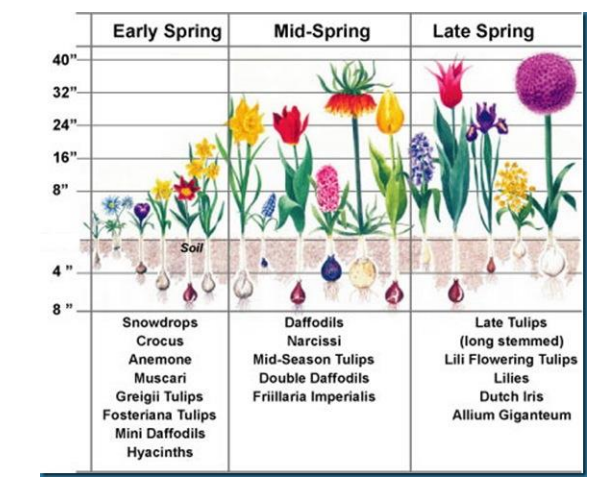
- WATER: Water the newly planted bulbs and irrigate regularly until the fall/winter rains begin. Water them while they are actively growing and until the foliage dies back. Be sure to water deeply enough to reach the root zone.
- FERTILIZER: Healthy mature bulbs store all the nutrients they need in their underground storage systems. The best time to fertilize is after blooming. According to Bulbs and More from the University of Illinois, five tablespoons of 10-10-10 soluble fertilizer or a similar “bulb” fertilizer plus two cups of bonemeal can be used for an area of 10 square feet in size.
- REPEAT BLOOM: Isn't that why we plant them? By the end of the season, the nutrient stores will have been used up. To replenish and build up the reserves for next year, it is essential to leave the bulb in the ground and allow the remaining leaves to gather as much sunlight as possible – don't cut those leaves and allow them to die back naturally.
- PESTS: Snails will eat the leaves and blossoms; handpick or trap them. See How to Manage Snails and Slugs in Gardens and Landscapes from UC IPM. Gophers, moles, voles, mice, and squirrels find bulbs delicious (although they avoid daffodil bulbs because they taste bitter and are mildly poisonous). You can protect your bulbs by planting them in cages made from ¼ - ½ inch wire. Containers and raised beds with wire mesh lining can also help.
Looking to extend your flowering season? Summer and Fall blooming bulbs, such as gladiolas, dahlias, begonias, cannas, and calla lilies, are usually planted in the Spring after the threat of frost, as they are not winter hardy. Sometimes, these bulbs are called tender bulbs. More about these plants will appear in a future issue of The Coastal Gardener.
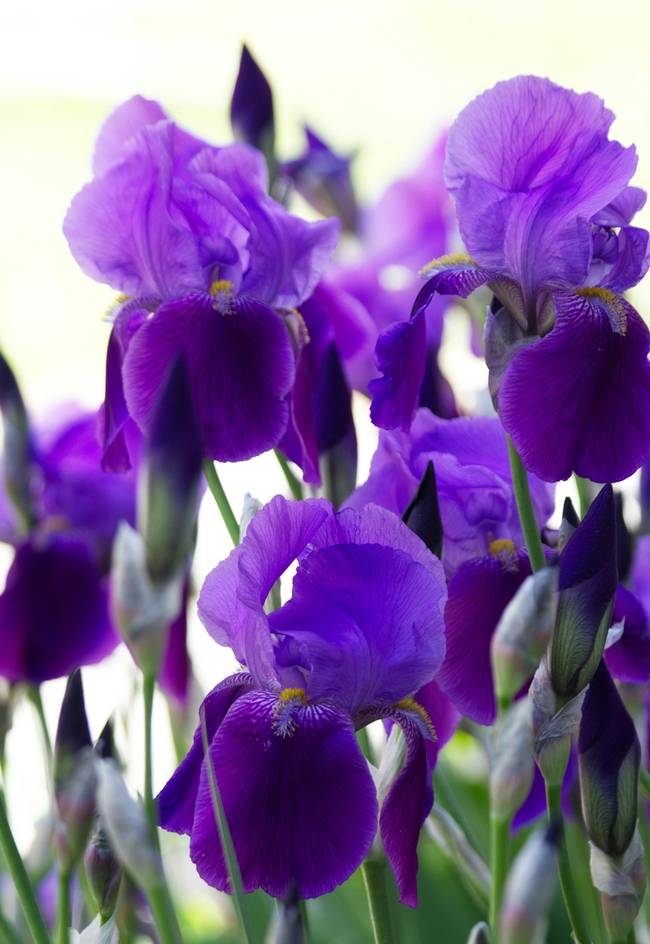
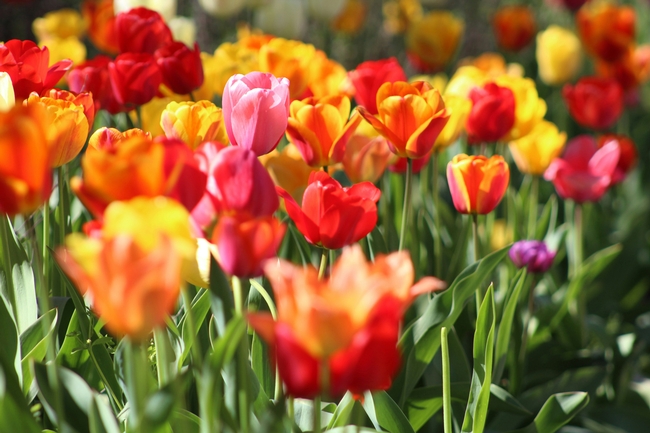
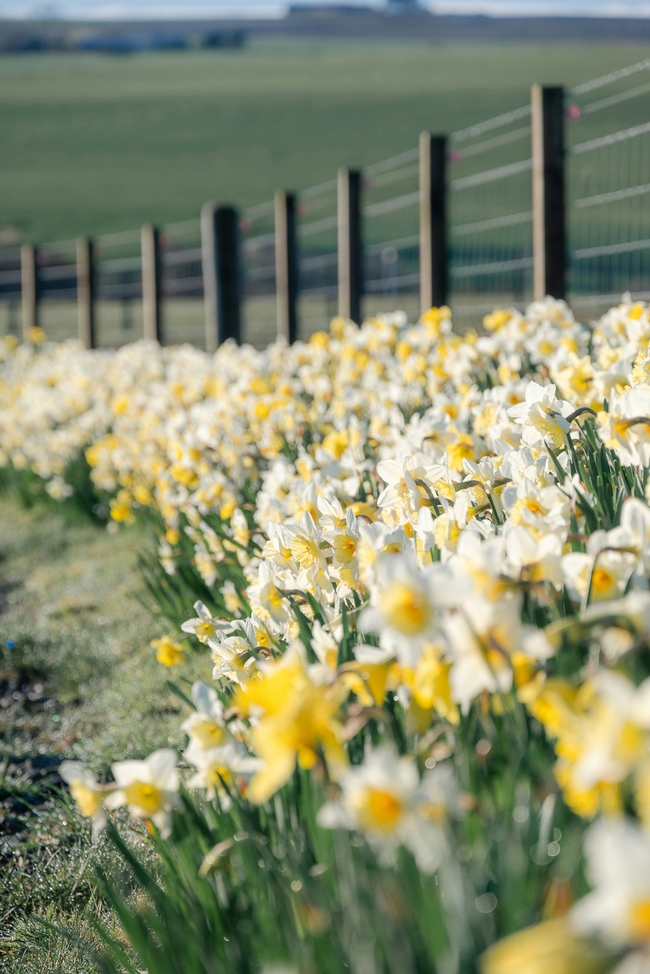
Resources:
For detailed information about bulbs and geophytes, visit https://propg.ifas.ufl.edu/#07-geophytes
Questions and Answers about Growing Bulbs https://extension.illinois.edu/flowers/bulbs
Spring Blooming Bulbs – Planting, Growing and Dividing, by Becca Harper, https://ucanr.edu/sites/mglaketahoe/files/290739.pdf
Summer and Fall Blooming Bulbs, Penn State Extension, https://extension.psu.edu/summer-and-fall-blooming-bulbs
- Author: Compiled from UC ANR Master Gardener Websites
Not ready to hang up your gardening tools as we head into late fall and winter? Consider these plants and garden tasks for October, November, and December.
- SOW COVER CROPS (also called green manure or compost crops). Bell beans and vetch are good choices. If you'd like more information about common cover crops for California, visit this USDA site.
- PLANT
- Artichoke
- Fava beans
- Garlic
- Radish
- Spring flowering bulbs
- California natives. Visit Native Planting Guides from the California Native Plant Society for suggestions for your location.
- DIVIDE spring and summer flowering perennials. The University of Minnesota Extension offers an excellent resource for how and when to divide perennials.
- COMPOST OLD CROPS (be sure they are disease-free) and leaves. Cover the compost pile once the rains begin.
- SPRAY HORTICULTURAL OIL on deciduous fruit trees, roses, and berry bushes. Always read and follow all label directions for proper timing and rates dependent on the stage of the pest's life cycle.
- CLEAN, SHARPEN, and OIL your garden tools.
- PLAN your spring garden.
Additional Resources
How and when to divide perennials, University of Minnesota Extension
https://extension.umn.edu/planting-and-growing-guides/dividing-perennials
Planting Calendar for Humboldt and Del Norte Counties, Cool Season Vegetables, UC Master Gardeners of Humboldt and Del Norte Counties https://ucanr.edu/sites/hdnmastergardeners/files/323462.pdf
Recommended planting dates for major regions of California, California Native Plant Societyhttps://mg.ucanr.edu/Gardening/Vegetable/Preparing/PlantingTime/
Seasonal Landscape IPM Checklist, UC IPM
https://ipm.ucanr.edu/home-and-landscape/seasonal-landscape-ipm-checklist/checklist/?region=7#gsc.tab=0
Your Alameda County Garden, Month-by-Month, UC Master Gardener Program of Alameda County
https://acmg.ucanr.edu/Your_Garden_Month-by-Month/
- Author: Jay Nord, UCCE Master Gardener, Humboldt & Del Norte Counties
“At Sapience Therapeutic Farms, we sow the seeds of possibilities that cultivate independent skills, community, and wisdom.”
When describing what this crazy idea of mine is, I felt that the vision statement was the best way to start this article. It shaped how I developed this from idea to conception and now growth. However, to get the full picture of how I could pull off something like this, we need to return to the 1900's.
In 1997, while working a retail job in the Bayshore Mall and attending College of the Redwoods, I saw a job advertisement that asked for someone to come work with their 4-year-old child with autism. Autism was something I had very little knowledge of, but I seemed to have a knack for working with children and thought it was a good way to get some skills and learn something new.
Over the next 25 years, I was able to accomplish all the goals I had set for myself (and some I didn't). At Humboldt State University (now Cal Poly Humboldt), I obtained my BA in Psychology in 2000. Soon thereafter I was able to start my own behavioral consulting business and became a vendor of the Redwood Coast Regional Center as a Behavior Management Assistant.
After about a year with my own business, I was at a behavioral conference and met the owner of an agency trying to expand into Humboldt. Dr. Ira offered me a job that same day, and I soon began to work for one of the first behavior agencies in Humboldt County that specialized in applied behavior analytic work. Applied Behavior Analysis (ABA) is research-based therapy that helps people learn new skills and improve their behavior. ABA focuses on how behavior is affected by the environment and how learning takes place. It helps build the skills needed to talk, play, and live."
During my time working for this agency, I was able to go from direct 1:1 work with clients to being promoted to Clinical Director of the agency that at the time, served clients in Humboldt, Del Norte, Mendocino and Lake Counties. My duties as Clinical Director included recruiting and hiring staff, interviewing potential families for intake, completing intakes of new clients, creating the office budget, providing ABA directly to clients and their family as well as managing the consultants and 1:1 staff. During my time with that agency, I went back to school and received my MA in Education with an emphasis in applied behavior analysis and soon after I received my Board-Certified Behavior Analyst (BCBA) credential.
Life was great, I had a good job that I was respected for my knowledge, skills and being the person, I wanted to be…and then COVID! Like most of the world, it spun me for a loop and made how I did my work impossible or at least one of the biggest challenges I have ever faced. However, on the flip side to that crazy experience, we suddenly had a bit more time on our hands because we weren't supposed to leave our homes. I was working from home. I was working from my home office in our 1961 Shasta camp trailer and decided I wanted to rip out all the “grass” in my front yard and start all over again with a garden. What happened after that moment has changed my life.
Every day, I was out in the yard cleaning, prepping beds, and planting flowers and veggies when I noticed something that didn't happen very often in my neighborhood. My neighbors and people walking down the street would stop and say “hi” or comment about the yard in some way. That interaction made me think about the connection we have with plants and how that connection can strengthen our connection with people. Light bulb! What if I had space to grow plants of all kinds where people with developmental disorders could come out and learn how to care for them while learning how to care for themselves?
So, what does one do with an idea so large and so new? Quit their well-paid job of course! With the support of my amazing wife, we tightened our belts and cut out non-essential spending so I could go back to school and learn how to be a better gardener and learn some new skills. I found an online program to become a Horticultural Therapist from the University of Tennessee and was accepted to that program as well as the program you all know me from, the Master Gardener Program.
Then in 2022 we started our own business, and I completed a very lengthy service design for the Redwood Coast Regional Center, and I was referred my first client. Luckily, we could find a little land to lease to get this all started on and the first year was amazing, but I needed my own property if I was going to run this program like I had pictured. In September of 2023, we found a piece of property and were able to purchase it. We now have 11 acres of amazing trees, native plants, wildlife, and farmland. Clients now get to come out to enjoy and learn about how the life of a plant is related to ours and how we treat the plant is very similar to how we treat ourselves and others. The more we nurture the plant, give it the basics of what it needs, it will thrive, grow and give us bounty…the same way life does.
There are currently 9 people that come out to the farm on a weekly basis. They range in abilities from nonverbal and just along for the ride to owning their own microenterprise and making woodworking projects to sell or getting paid to work on the farm every week. When clients arrive, we typically will start with going to see what new things have bloomed or pet the goats and chickens. All participants are involved in some part of the farm process, such as planting seeds, harvesting products, processing the product for sale, or maybe just putting woodchips onto pathways. No matter what the skill level of that individual, we can figure out a way for them to participate and be part of something bigger and help to feed our community.
The people that come out to the farm range in ages from 9 years old to 35 years old. If the participants desire, I try to foster any sort of entrepreneurial skills for the clients so they can create something that someone else wants to purchase and use or decorate their home with. As well as entrepreneurial skills, they also have the opportunity to learn interpersonal skills with the community. We go to multiple farmers' markets and interact with people all over the county. The community gets a chance to become more aware of the neurodiverse population we have here and what skills they have.
As I look around the farm, I see that this journey that we are on is just beginning, and there is no telling what ideas we will come up with to make this crazy idea of teaching behavioral skills through agriculture even better.
All photos by the author and used with permission.
Resources:
Become a Master Gardener, UC Master Gardeners of Humboldt and Del Norte Counties https://ucanr.edu/sites/hdnmastergardeners/Become_a_Master_Gardener/
Horticultural Therapy Program, University of Tennessee, Department of Plant Sciences https://plantsciences.tennessee.edu/horticulturaltherapycertificate/
UC Master Gardener Program https://mg.ucanr.edu/
Who We Are, UC Master Gardeners of Humboldt and Del Norte Counties https://ucanr.edu/sites/hdnmastergardeners/Home/
- Author: Lisa Nedlan UCCE Master Gardener
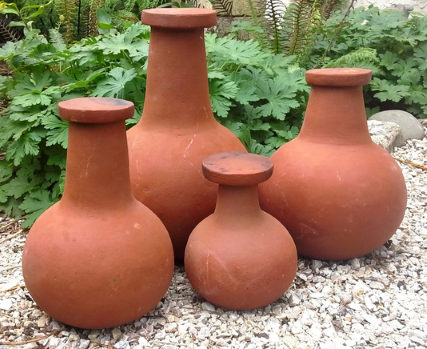
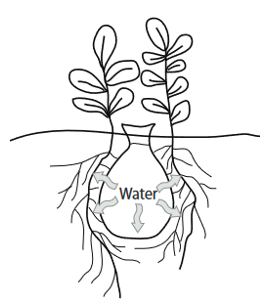
The effectiveness of olla irrigation lies in the interaction between soil moisture and the plant's roots. This dynamic creates a unique suction force, where the plant's roots 'pull' the water out of the olla if the soil is dry. Conversely, if the soil is wet from rainfall or surface watering, the water remains in the olla until the surrounding soil dries, ensuring a balanced and efficient watering system.
Implementing olla irrigation is not just about watering your plants; it's about fostering deep watering and dense root growth. This, in turn, enhances nutrient and water uptake, leading to healthier plants. Additionally, the controlled moisture levels prevent the extremes of wet and dry that can cause bitterness in greens and cracks in tomatoes and melons. As a bonus, the relatively dry soil surface acts as a natural deterrent to weeds and some unwanted insects, further enhancing the health of your garden.
Crops with fibrous root systems, such as tomatoes, squash, melons, and chiles, respond well to olla use. When using ollas with plants with shallow root systems, consider the shape and size of the olla and where the water will be in the soil. You can also use ollas with young perennial landscape plants (trees, vines, and shrubs.) Plants with woody roots might break an olla. If you notice that you are having to fill the pot more frequently, consider that a crack has formed in the olla.
Ollas are inefficient for densely planted annual crops due to the number of ollas necessary for even coverage.
Tips for using ollas
- Bury the olla, leaving 1 – 2 inches above the soil surface to keep dirt and mulch from getting inside. Gently pack the soil around the olla to prevent air pockets. Air pockets will prevent water from moving into the soil and keep roots from growing.
- To maximize impact, place ollas every 2 – 3 feet in the garden. Larger ollas, with a 2 or more-gallon capacity, can be placed up to 3 – 4 feet apart.
- If your soilis very deep, place a saucer or drainage tray under the olla at the bottom of the hole. This will promote water seepage outwards instead of downwards.
- Check the water level frequently and refill as necessary. Soil type, plant density, and weather can influence how often you need to refill. Refill times can vary from every seven days or more or as frequently as every other day.
- Cover the olla opening with a lid, rock, or plate to minimize evaporation and prevent mosquito breeding.
- Ollas are best suited for coarse-textured and/or sandy soil. Soil with a high clay content does not dissipate water well.
- When planting seeds, plant a few inches away from the olla opening. Water the entire planting area. If your olla isn't keeping the top 2 inches of soil moist, you may need to surface water until the seeds germinate.
- Know where your ollas are buried. Mark them with rocks, a pin flag, or something else to prevent someone from stepping on the olla.
- If you live in an area with hard freezes, dig up your olla each winter to prevent cracking underground.
Several types of ollas are available for purchase at garden shops, online, or from your local potter. There are several methods for making your own from clay or terracotta pots. Consider your space, the cost, how many ollas you will need, and how often you are willing to refill them. If you would like to make an olla from terracotta flower pots, click here.
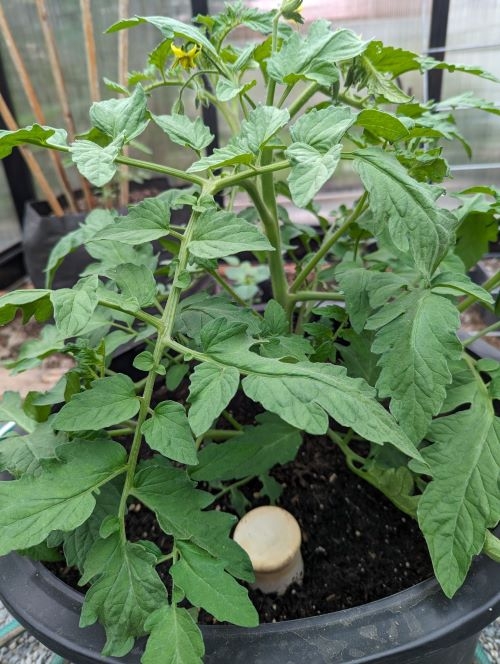
Resources
How to use olla irrigation
https://wateruseitwisely.com/blog/olla-irrigation/
Olla Irrigation
https://images.nativeseeds.org/pdfs/Ollairrigationhandout.pdf
University of Arizona, Irrigating with Ollas
https://extension.arizona.edu/sites/extension.arizona.edu/files/pubs/az1911-2021.pdf

